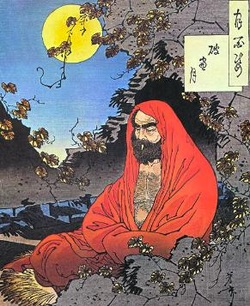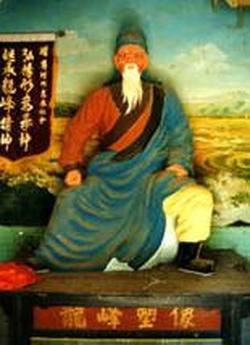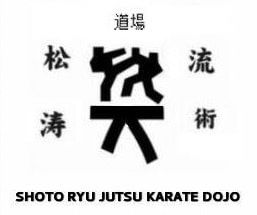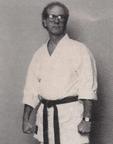Our Martial Art Lineage Tree
This Is only one of many theories because there was no written records all martials arts have some roots to begin with
1. **INDIA**
2. CHINA
3. OKINAWA
4. JAPAN
5. CANADA
2. CHINA
3. OKINAWA
4. JAPAN
5. CANADA
1. Indian Martial Arts
Varma Kalai
Legend has it that Lord Siva taught this art form to his son Lord Murugan and Lord
Murugan taught this art to the sage Agastya, foremost of the Siddhar's, during the times of Sangam Literature. He
transferred the knowledge of this art to other Siddhar's and he also wrote treatises on this art
in Tamil. The presence of shrines to Agathiar in Courtallam suggests that he researched the art
there
Murugan taught this art to the sage Agastya, foremost of the Siddhar's, during the times of Sangam Literature. He
transferred the knowledge of this art to other Siddhar's and he also wrote treatises on this art
in Tamil. The presence of shrines to Agathiar in Courtallam suggests that he researched the art
there
Kalaripayattu
is an Indian martial art from the southern state of ancient Kerala. One of the oldest fighting systems in existence. Kalaripayattu includes strikes, kicks, grappling, preset forms, weaponry and healing methods.
Vajra mushti

Taishi BOHIDHARMA Daruma (470-543 AD) A Monk (From India) and suposedly the Founder of Zen Buddhism
Some Chinese accounts describe Bodhidharma as being disturbed by the poor
physical shape of the Shaolin monks,after
which he instructed them in techniques to maintain their physical condition as
well as teaching meditation.He is
said to have taught a series of external exercises called the Eighteen
Arhat Hands(Shi-ba Lohan Shou), and
an internal practice called the Sinew Metamorphosis Classic.In
addition, after his departure from the temple, two manuscripts by Bodhidharma
were said to be discovered inside the temple: the Yijin Jing( "Muscle/Tendon Change
Classic") and the Xi Sui Jing. Copies and translations of the Yi Jin Jing survive to the modern day. The Xi Sui
Jing has been lost
Some Chinese accounts describe Bodhidharma as being disturbed by the poor
physical shape of the Shaolin monks,after
which he instructed them in techniques to maintain their physical condition as
well as teaching meditation.He is
said to have taught a series of external exercises called the Eighteen
Arhat Hands(Shi-ba Lohan Shou), and
an internal practice called the Sinew Metamorphosis Classic.In
addition, after his departure from the temple, two manuscripts by Bodhidharma
were said to be discovered inside the temple: the Yijin Jing( "Muscle/Tendon Change
Classic") and the Xi Sui Jing. Copies and translations of the Yi Jin Jing survive to the modern day. The Xi Sui
Jing has been lost
2. Chinese Martial Arts
Priest Dong Cheng of QianZhai, was famous for his Shi San Shi Rou Shou (1500's)
and was taught Shaolin Quan from two students of Bai Yufeng
Ji Jike (also known as Ji Longfeng )
(1588-1662AD)
According to accepted theory, he is widely considered to be the originator of
the internal martial art of Xingyiquan.
According to accepted theory, he is widely considered to be the originator of
the internal martial art of Xingyiquan.

Wong Chung-Yoh (Xingyiquan style)
(1630-unknown)
Master of Hsing-I(Xing Yi) and Chi-Kung taught in Fukein province of China
Zhang Xue Li (A Chinese emmissarie to Okinawa) and later Wanshu (also known as Wang Ji (1621 – 1689)Taught Matsu Higa Peichin techniques of Chuan Fa (Shorinji kempo).
|
Shang Kushanku
(1700’s) A Chinese envoy from Fuzhou Alias: Ku Shanku,Kosokun,Kung Hsiang Chun, kwang Shang Fu, Ku Shan Ku, Koshokun, Ko Sokun, Gong Xiang FU Kushanku was famous for his fighting abilities. He influenced the development of the Shorin ryu a lot by introducing the Kata Kushanku (Kanku Dai), which plays an important role in many styles of karate. Also it is said, that he introduced hikite |
3. OKINAWAN KARATE (Tode) LINEAGE
Matsu Higa Peichin (alias Machuu Hijaa )(1640-1720)
The oldest Teacher of the Kobujutsu in Okinawa was Matsu Higa Peichin he had few students and taught Takahara Pechin |
Takahara Pechin
(1683-1762) Was Master to Sakugawa who was known as the father of Okinawan Karate and is attributed to have been the first to explain the aspects or principles of the dō ("way") |
Chatan Yara(1668-1756)
Legendary figure in Okinawan martial arts he travelled to Fukien province of China to learn Chinese Kempo and weaponry and also taught Takahara Pechin |
'Tode' (Bushi) Satunuku Sakugawa (1733-1815) also known as Karate Sakugawa was considered the first teacher of Okinawan karate
Sokon (Bushi) Matsumura (1796-1893) considered the Forefather of Shorin Ryu karate; he was the chief martial arts instructor and bodyguard for the Okinawan King
4. SHOTOKAN KARATE LINEAGE TREE
1. Master Funakoshi Gichin (1868-1957) born on Okinawa he is the founder and considered **Father of modern day Shotokan Karate** famous for making popular use of the the kanji of China hand to **Kara te do 'empty hand way** ' He also was the first to PUBLICALLY give an Official karate demonstration to the Japanese people. He was the student of Azato and Itosu and their teacher Matsumura. He blended both Shuri-te and Naha-te into a practice he called Kara-Te-Do. Shotokan was named by Funakoshi's students after his pen name of poetry meaning **Shoto (wavy pines) Kan ( place of )** where they would train. **Kanku Dai** was Master Funakoshi's favarite kata to perform.
|
2. Nakayama Masatoshi (1913-1987) student of Funakoshi he co-formed the Japan Karate Association (JKA) in 1949 along with Hidetaka Nishiyama called it JKA Shotokan He then became the Chief head Instructor for the JKA
4. Sensei Y.Katsumata ( Trained under at many seminars held in NFLD)
Sensei Joe Gillies(? - 2010) Sensei to Sensei B. Lee and was greatly influenced by tsuruoka Sensei. Joe Gillies, known as the Father of Karate in Newfoundland, was president of the Newfoundland and Labrador Sports Federation, and coached the Canadian Karate Team in various world championships. He established Karate schools across Newfoundland, initiated and was president of the Newfoundland Karate Association, and was also president of the National Karate Association.
|
Dr. Chitose (1898-1984) having trained with Gichin Funakoshi while still on Okinawa, the young and talented Chitose would be asked to assist this Okinawan karate man ( Funakoshi) by teaching in Funakoshi Sensei's first karate school (Yotsuya dojo 1924 ??). While Chitose was teaching at Funakoshi's first dojo, Chitose would give instruction to another man who would eventually become famous in the karate world. This man was Nakayama Masatoshi, later to become the Chief Instructor of the Japan Karate Association (JKA) Chitose Sensei was the founder of Chito Ryu Karate a blend of Shorin and Shorei from Okinawa
5. CANADA5. **O'Sensei Tsuruoka recognized as the father of Canadian Karate**(1929- 10 Oct 2014) was a student of Dr. Chitose founder of Chito Ryu Karate(blend of Shorin Ryu and Shorei Ryu) and was a good friend of Nishiyama Sensei. Masami Tsuruoka Sensei is the founding President of Karate Canada and pioneer of Canadian Karate
Oss O'Sensei |
|
5. Sensei Bruce. Lee from Grandfalls NFLD ( My Sensei's Sensei who was my Sensei :) ) I used to tell everyone that I trained with Bruce Lee :) oops I mean Sensei Bruce (NKA)
6. Sensei Wayne Lorenzen from Gander NFLD (My Shotokan Sensei.I was Sensei Lorenzen's first student who trained under him to receive a blackbelt from Master Nishiyama Sensei)
7. Sensei Rob Sweeney 3rd degree(Sandan) blackbelt Shotokan (NCCP certified coaching level A / Karate NS Official kumite license A and Kata license A Karate Canada Judge B Kata and Judge B Kumite). Started training karate 1984 in Chito-ryu karate in Amiraults hill, Tusket NS Under Sensei Milton .I joined the Military (Canadian Airforce) in 1987,serving 21 years and was exposed to various martial arts ie.( Chito Ryu, Shotokan, Wado Ryu, Goju Ryu, Ishhin Ryu, Shito Ryu ).I mainly trained in Chito Ryu till I switched to Shotokan in 1991 and **was Graded for my blackbelt by Master Hidetaka Nishiyama Sensei**( JKA co founder / ITKF /AAKF . Karate training is an ongoing life experience it can be practiced at any age young or old with little effort because** the ultimate aim of karate is in the perfection of one's character.**
OSS |
Sensei Milton Bourque - Amirault's Hill, Nova Scotia
Sensei Bill Dean - Summerside PEI Sensei Jack & Donna Russell - Gander NFLD MY SHOTOKAN INFLUENCE Sensei Wayne Lorenzen Sensei B. Lee Katsumata Sensei Master Nishiyama Hidetaka Sensei O Sensei |



















